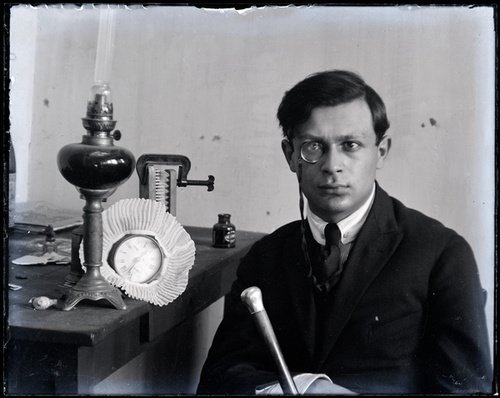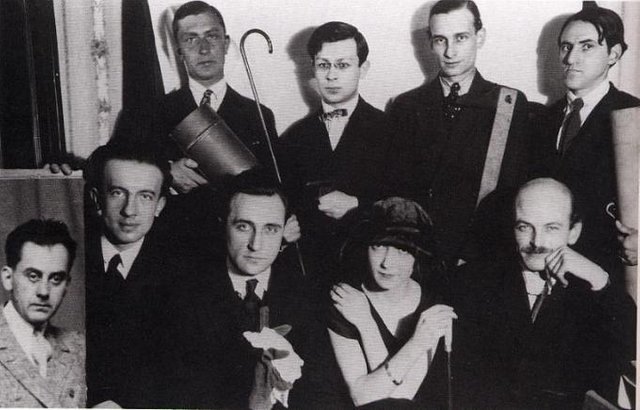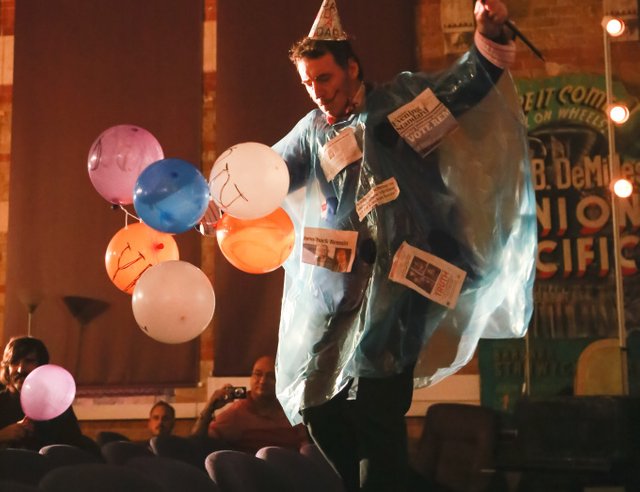DADA and Film: Rebellion Of The Objects - The Curious and Bizarre
A specially commissioned article for Film Focus' Emily Cook from Mike Freedman, founder of the world's first Dadaist festival: LonDADA
Back in late spring of 2015, during my habitual descent down the clickhole on the time-sucking vampire mistress we call Internet, I came across the fact that 2016 would mark the 100th anniversary of the birth of the Dada movement. One source claimed that Hugo Ball, one of the founders of Dadaism, first performed his seminal poem “Karawane” at the Cabaret Voltaire in Zurich on June 23rd, 1916.
“I shall be reading poems that are meant to dispense with conventional language, no less, and to have done with it.”Hugo Ball, 1916
So on June 23rd 2016, a group of musicians, performers, artists, filmmakers and Dada enthusiasts gathered at The Cinema Museum in Elephant & Castle to attempt to recreate a Dada salon from a century ago, a deliberately inscrutable, disordered and confusing affair, mashing together art, music and theatre in order to shake loose some other force, some bright spark of creativity that might ignite a new understanding of why any of us do any of the things we do.

The audience enjoying the London DADA festival (Photo credit: Ben Gregory)
As a filmmaker, I was naturally drawn to showing films, but there was such an enthusiastic outpouring of interest and support from performers that I couldn't help broadening the event to encompass all of the arts. However, the film programme remained a central part of my intention for the evening.We showed a programme of experimental and Dada shorts by Hans Richter, Helmut Herbst, John Smith, Bob Georgeson and Francis Thompson, as well as a 1968 feature documentary by Helmut Herbst called “Germany DADA – An Alphabet Of German Dadaism”. We also projected a 35mm print of “Ghosts Before Breakfast”, Hans Richter's seminal 1927 short film, with a new original score performed live by Vinzenz Stergin
In this excellent interview from 1972, an elderly Hans Richter reflects on his early days in film and describes “Ghosts Before Breakfast” as a “rebellion of the objects”. Richter began as a painter and then moved into film before returning to painting. “I wasn't interested anymore in the subject as such but more in the articulation on the canvas,” he says with regards to his shift from portrait painting to more abstract work. One could say that the emphasis in Dadaism is on process and not on outcome. The outcome is irrelevant and contemptible, a commercial preoccupation, while the process is the living part of the creative act.
“DADA remains within the framework of European weaknesses; it's still shit, but from now on we want to shit in different colours.”Tristan Tzara, 1918
The Dada filmmakers were interested in the handwerk, the handcraft, of filmmaking. Helmut Herbst, the director of “Germany DADA – An Alphabet of German Dadaism”, re-iterated that when I interviewed him for the video introduction to his film. He, like the Dadaist filmmakers, began as an artist and moved into film as a way of continuing his exploration of the techniques required to express his ideas. The twin pillars of independence and handcraft were absolutely fundamental for him as they were for the Dadaists whom he was inspired by and sought to emulate.
So where does that leave us today? The echoes of Dadaism are everywhere, in graphic design, on album covers (remember those?), t-shirts, in paintings, in galleries set up in railway arches or shipping containers. There is a direct line from Marcel Duchamp's 'readymades' (found objects re-purposed and presented in an artistic context) to Tracy Emin's bed and Damien Hirst's shark, just as there is a clear flow of approach and execution from Richter to Terry Gilliam in film. But is every montage also a homage or a descendant of Dada? If the techniques survive or evolve but the purpose, the ethos, is lost or forgotten, is it really the same thing? Anyone can pick up a camera and knock something together with available technology, but do any of us really know why we are doing anything or how to do it? The ease of technology is anathema to handwerk, in a sense, because it makes the process as frictionless as possible, with the end goal being the production of the artefact itself rather than a change in the internal state of the artist or the audience.
“I won't explain myself because I hate common sense.”
Tristan Tzara, 1918

In all this intellectual analysis, one thing gets lost – Dada was a revolutionary movement, not only because of the shift it brought to the modern art scene, but because it literally was in favour of overthrowing the established political, industrial and financial orders that had brought the world to ruin in 1916 with the folly and madness of World War I. That revolution didn't materialise, and those same orders plunged on into World War II. Richter was actually commissioned to make a film about hyperinflation in the Weimar Republic, the same hyperinflation that contributed to the social conditions which would prove so fertile for the rise of the Nazis, who among their many excesses and stupidities would destroy the soundtrack to Richter's film “Ghosts Before Breakfast” on the grounds that a “rebellion of the objects” could be a metaphor for or an incitement to a rebellion by the people.
“DADA was born out of a need for independence, out of mistrust for the community. People who join us keep their freedom.”Tristan Tzara, 1918

The Founders of Dada
Now, a century after a group of artists gathered in a dusty room and declared their contempt for the direction in which bourgeois industrial capitalism was taking society, we are again in a similar ferment. Economic hardship and instability weighs heavily on a greater and greater percent of the populace, war and terror seem to be present or spreading in every part of the world, the promise of technology and industry in many ways has never seemed less convincing, and the rumbles of discontent are beginning to show in the increased prevalence of extremism of all kinds.

Sir Gideon Vain performing at the London Dada Festival - Photo credit Ben Gregory
With all this going on, the artists appear to have either surrendered the field or declared full allegiance to the same financial, political and industrial interests they once defied or mocked. As Helmut Herbst asked when we spoke, where is the artistic radicalism that must be a counterpart to political radicalism in order to create a strong and lasting movement for change? In 1916 and in 1968, artists were outcasts or rebels, sniping at the established order from their basements and garrets. They were the loudest critics, the most creative opposition, fighting for the minds and emotions of the public, establishing a shared vocabulary with which to question, challenge and reject the predations of the rich and powerful. Now, it seems, artists are the house band rather than the protestors. The insidious influence of technology has been to turn all artists into consumers (or all consumers into artists). Multinational corporations don't care what kind of 'content' you create with your camera, laptop, phone and tablet as long as you buy them and upgrade them regularly to newer models.
Is there a Dada influence in film today? Undoubtedly. Does that influence represent the same thing it did a hundred years ago? Does it point us towards opening our minds? Does it change the way we make, think and interact with one another and the world around us? No. Should it? That's up to you.
The Dadaist movement and Tristan Tzara, especially are fascinating. It's art that reveals more about the observer than the creator. Nice job!
Great stuff. Thank you so much for posting this :) #dada #zurich